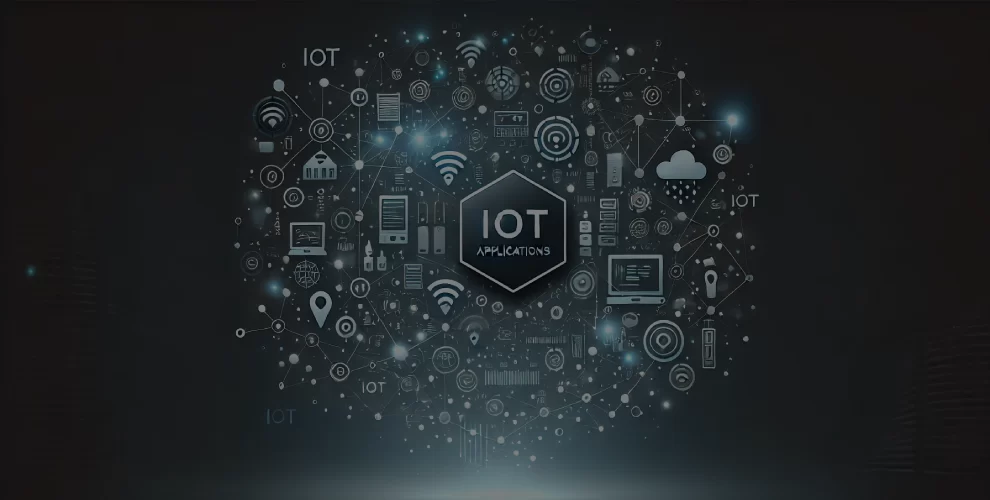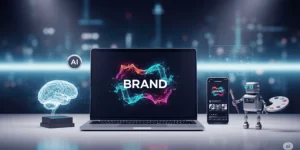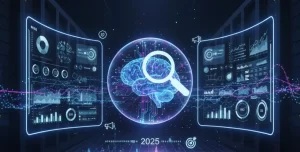
How IoT Applications are Transforming Different Industries
Table of Contents
Introduction
The Internet of Things (IoT) is reshaping the landscape of various industries, driving innovation and enhancing efficiency.
By connecting physical devices to the internet, IoT enables real-time data collection, analysis, and decision-making.
In this article, we will explore how IoT applications are transforming industries like healthcare, manufacturing, and agriculture, providing real-world examples and highlighting the benefits.
Key Takeaways
- Enhanced Operational Efficiency: IoT streamlines processes, reduces downtime, and optimizes resource usage across various industries.
- Improved Decision-Making: Real-time data and analytics enable more informed and timely decisions.
- Cost Savings and Productivity Gains: IoT reduces operational costs and boosts productivity through automation and predictive maintenance.
IoT in Healthcare
Remote Patient Monitoring
One of the most significant applications of IoT in healthcare is remote patient monitoring. IoT devices, such as wearable health monitors and smart medical devices, collect real-time data on patients’ vital signs and health metrics.
This data is transmitted to healthcare providers, allowing for continuous monitoring and timely interventions. For example, a smart blood pressure monitor can alert a doctor if a patient’s readings exceed a certain threshold, enabling prompt medical response.
Benefits:
- Continuous monitoring of chronic conditions.
- Early detection of potential health issues.
- Reduced need for frequent hospital visits.
Smart Medical Devices
Smart medical devices, such as smart pills and wearable health monitors, are revolutionizing patient care. Smart pills equipped with sensors can monitor medication adherence and track the effectiveness of treatments.
Wearable devices, like smartwatches, can monitor heart rate, sleep patterns, and physical activity, providing valuable insights into patients’ health and wellness.
Benefits:
- Enhanced medication adherence and treatment monitoring.
- Comprehensive health data collection.
- Personalized healthcare and treatment plans.
Case Study: Mayo Clinic
The Mayo Clinic has implemented IoT technology to monitor patients with chronic conditions remotely.
By using wearable devices that track vital signs and health metrics, the clinic can provide timely interventions and personalized care plans.
This approach has resulted in improved patient outcomes and reduced hospital readmissions.
IoT in Manufacturing
Predictive Maintenance
In manufacturing, IoT is transforming maintenance practices through predictive maintenance. IoT sensors are installed on machinery to monitor their health and performance in real-time.
By analyzing this data, manufacturers can predict when a machine is likely to fail and perform maintenance before a breakdown occurs.
This reduces downtime and maintenance costs, improving overall operational efficiency.
Benefits:
- Reduced unplanned downtime.
- Lower maintenance costs.
- Extended equipment lifespan.
Smart Factories
Smart factories leverage IoT to automate and optimize production processes. IoT devices and sensors are integrated into production lines, enabling real-time monitoring and control.
This connectivity allows for automated adjustments, quality control, and process optimization. For example, IoT-enabled robots can adjust their operations based on real-time data, ensuring consistent product quality and efficient use of resources.
Benefits:
- Increased production efficiency.
- Improved product quality.
- Enhanced flexibility and scalability.
Case Study: General Electric
General Electric (GE) has implemented IoT solutions in their manufacturing plants to create smart factories.
By using IoT sensors and data analytics, GE monitors equipment performance and predicts maintenance needs, reducing downtime and increasing efficiency.
This approach has led to significant cost savings and productivity gains.
IoT in Agriculture
Precision Farming
Precision farming is an advanced agricultural technique that utilizes IoT to optimize crop production. IoT sensors are placed in fields to monitor soil moisture, nutrient levels, and weather conditions.
For instance, IoT-enabled irrigation systems can automatically adjust water levels based on soil moisture data, ensuring optimal hydration for crops.
Benefits:
- Improved crop yield and quality.
- Efficient use of resources.
- Reduced environmental impact.
Livestock Monitoring
IoT applications in agriculture also extend to livestock monitoring. IoT devices such as GPS trackers and health monitors are attached to animals to track their location, health, and activity.
This data helps farmers monitor the well-being of their livestock, detect early signs of illness, and ensure proper nutrition and care.
Benefits:
- Enhanced animal health and productivity.
- Early detection of diseases.
- Better management of grazing and feeding.
Case Study: John Deere
John Deere, a leading manufacturer of agricultural machinery, has integrated IoT technology into their equipment to support precision farming.
Their IoT-enabled tractors and harvesters collect data on soil conditions, crop health, and machinery performance. This data helps farmers make data-driven decisions, improving efficiency and crop yields.
IoT in Retail
Smart Inventory Management
IoT applications in retail include smart inventory management systems that track inventory levels in real-time.
IoT sensors and RFID tags are used to monitor stock levels, automatically updating inventory records as items are sold or restocked. This ensures accurate inventory tracking, reduces stockouts, and optimizes inventory turnover.
Benefits:
- Accurate real-time inventory tracking.
- Reduced stockouts and overstock situations.
- Improved supply chain efficiency.
Customer Experience Enhancements
IoT technology enhances the customer experience in retail by providing personalized shopping experiences and streamlining the checkout process.
For example, IoT-enabled beacons can send personalized offers to customers’ smartphones based on their location within the store.
Additionally, smart checkout systems allow customers to scan and pay for items using their mobile devices, reducing wait times and improving convenience.
Benefits:
- Personalized marketing and promotions.
- Faster and more convenient checkout.
- Improved customer satisfaction.
Case Study: Walmart
Walmart has adopted IoT technology for smart inventory management and customer experience enhancements.
They use IoT sensors to monitor inventory levels and ensure products are always in stock. Additionally, Walmart stores are equipped with IoT-enabled beacons that send personalized offers to customers, enhancing their shopping experience.
IoT in Smart Cities
Traffic Management
IoT is revolutionizing traffic management in smart cities by providing real-time monitoring and control of traffic flow.
IoT sensors and cameras are installed at intersections and along roadways to collect data on vehicle movement, congestion levels, and traffic incidents. This data is analyzed to optimize traffic light timings, reduce congestion, and improve road safety.
For example, smart traffic lights can adjust their signals based on real-time traffic conditions, ensuring smoother traffic flow.
Benefits:
- Reduced traffic congestion.
- Improved road safety.
- Enhanced efficiency of public transportation systems.
Energy Management
Smart cities use IoT technology to manage energy consumption more efficiently. IoT-enabled smart grids monitor and control the distribution of electricity, optimizing energy use and reducing waste.
Smart meters provide real-time data on energy consumption, allowing consumers to monitor their usage and make informed decisions to save energy. Additionally, IoT systems can integrate renewable energy sources, such as solar panels and wind turbines, into the grid.
Benefits:
- Improved energy efficiency.
- Reduced energy costs.
- Integration of renewable energy sources.
Case Study: Barcelona
Barcelona is a leading example of a smart city utilizing IoT technology. The city has implemented IoT solutions for traffic management, energy management, and waste management.
IoT sensors monitor traffic flow, optimize energy use in street lighting, and track waste levels in garbage bins. These initiatives have resulted in reduced congestion, lower energy consumption, and improved waste management.
Security and Privacy Concerns
Data Security
While IoT offers numerous benefits, it also poses significant security challenges. IoT devices collect and transmit large amounts of data, making them attractive targets for cyberattacks.
Ensuring the security of IoT systems involves implementing robust encryption, regular software updates, and secure authentication mechanisms.
Additionally, manufacturers must adhere to industry standards and best practices to protect user data and maintain system integrity.
Challenges:
- Vulnerability to cyberattacks.
- Ensuring data integrity and confidentiality.
Privacy Issues
IoT devices often collect sensitive personal information, raising concerns about user privacy. It is crucial to implement privacy-by-design principles, ensuring that privacy is considered at every stage of IoT development.
Users should be informed about the data being collected and have control over how their data is used. Compliance with regulations such as the General Data Protection Regulation (GDPR) is essential to protect user privacy and build trust.
Challenges:
- Protection of personal data.
- Transparency in data collection and usage.
- Compliance with privacy regulations.
Future Trends and Developments
Advancements in IoT Technology
The future of IoT is marked by continuous advancements in technology. Emerging technologies such as 5G, edge computing, and artificial intelligence (AI) are set to enhance the capabilities of IoT systems.
5G networks will provide faster and more reliable connectivity, supporting the massive deployment of IoT devices. Edge computing will enable real-time data processing at the edge of the network, reducing latency and bandwidth usage.
AI will enhance data analytics, enabling more sophisticated decision-making and automation.
Future Prospects:
- Faster and more reliable IoT connectivity with 5G.
- Real-time data processing with edge computing.
- Enhanced analytics and automation with AI.
Increased Integration and Interoperability
As IoT technology evolves, there will be a greater focus on integration and interoperability. IoT devices from different manufacturers and platforms will need to work seamlessly together to provide a cohesive user experience.
Industry standards and protocols will play a crucial role in ensuring interoperability, enabling the development of comprehensive IoT ecosystems.
Future Prospects:
- Seamless integration of IoT devices.
- Development of standardized protocols.
- Creation of comprehensive IoT ecosystems.
Conclusion
The Internet of Things (IoT) is transforming various industries by enhancing efficiency, improving decision-making, and reducing costs.
From healthcare and manufacturing to agriculture and smart cities, IoT applications are driving innovation and delivering significant benefits. However, addressing security and privacy concerns is essential to fully realize the potential of IoT.
As technology continues to evolve, IoT will play an increasingly important role in shaping the future of these industries.
Stay tuned to WikiGlitz for more insights and updates on the latest technology trends. We hope you found this article informative and engaging.
FAQs
What is IoT and how does it work?
The Internet of Things (IoT) refers to a network of interconnected devices that collect and exchange data using sensors, software, and other technologies. These devices communicate over the internet, allowing for real-time data collection and analysis.
Which industries benefit the most from IoT applications?
Industries such as healthcare, manufacturing, agriculture, retail, and smart cities benefit significantly from IoT applications through improved efficiency, decision-making, and cost savings.
What are the main challenges in implementing IoT solutions?
Key challenges include ensuring data security, protecting user privacy, integrating diverse devices and platforms, and managing the vast amounts of data generated by IoT systems.
How does IoT improve operational efficiency?
IoT improves operational efficiency by automating processes, providing real-time data for informed decision-making, and enabling predictive maintenance to reduce downtime and maintenance costs.
What are some future trends in IoT technology?
Future trends include the adoption of 5G for faster connectivity, the use of edge computing for real-time data processing, and the integration of AI for advanced data analytics and automation.
Want to keep up with our blog?
Our most valuable tips right inside your inbox, once per month.
Error: Contact form not found.
WikiGlitz Team
Welcome to WikiGlitz, your ultimate destination for tech insights and innovation. Our expert team is dedicated to delivering free resources and professional advice on various technology topics, including Artificial Intelligence, Cyber Security, Cloud Computing, and more. We strive to empower our readers with up-to-date information and practical guidance, ensuring you stay ahead in the rapidly evolving tech landscape. At WikiGlitz, we are passionate about making complex technology accessible to everyone. Our team of seasoned experts curates content that is both informative and engaging, helping you understand and leverage the latest tech trends. Whether you're a tech enthusiast or a professional, WikiGlitz is your go-to source for reliable, expert-driven content. Join us on this journey to explore and embrace the future of technology.





